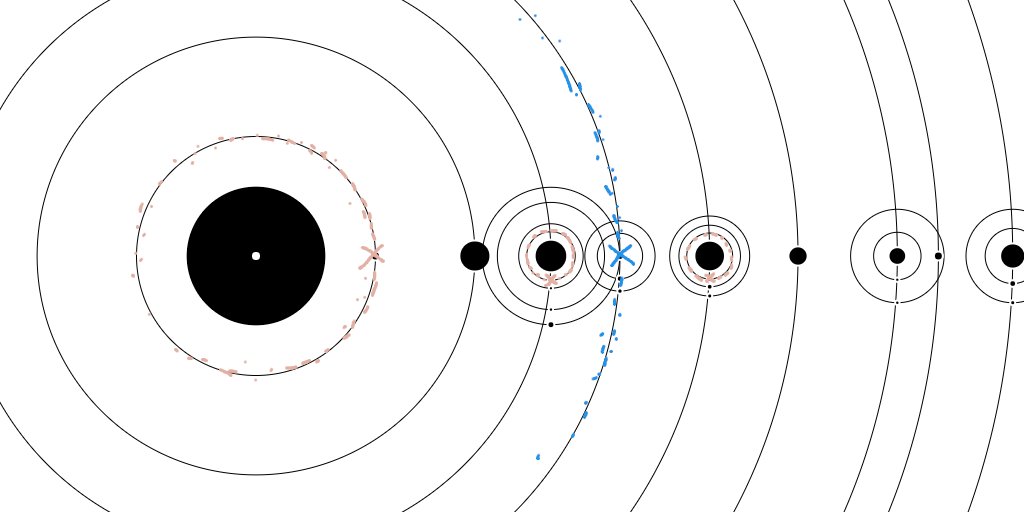on computers writing stories, specifically the near future cultural effects of content interpolation + prediction models such as GPT-2 (as featured on talktotransformer.com), from the perspective of an artist who frequently uses procedural generation. 

firstly, i should say: with due respect to current widespread enthusiasm and hard work of people within the field, i consider where we currently are in terms of AI to be an incremental step forward, not a huge leap.
i want to talk about what computers making art is, but first let's start with the shape of humans making art. (this is reductionist, by necessity and with apologies, due to the constraints of this format.)
we currently insist, culturally, that creative work be focused on "content creation". this is a complicated idea, and tied intimately, confusingly, with both natural creative process and commoditization of the individual / art. 

at this point in time creative work is intimately married to the idea of the artifact: drawings, animations, short stories, movies, games, etc.. 

so let's step forward a little bit in time and pretend that new techniques can now write, draw, etc., in ways which approach the sophistication and nuance of human output.
it's not a simple numbers game. there are structural differences between current techniques and human creation. we will need genuinely new techniques to get to that point. at some point, however, we'll get there.
at first we'll likely see a novelty phase. on social media, a certain set will embrace it. we had our ebooks twitter bot fad. now we have nn recipes or race horse names. this is something of an established form. so in the future, we'll have an equivalent.
look, it's a rom made by combining mario and sonic. look, it's paradise lost with hinduism instead of christianity. look, it's a four year run of (series that only got a pilot).
and this will expose a pile of raw threads. people will argue that there are cultural biases in these systems, that they are racist or sexist (despite the protests of evangelists, they will of course always propagate the biases and ignorance of their creators).
but at some threshold, people will increasingly turn to computers to satisfy demand for content. so what is the meaning of content creation if one can spin up endless books, drawings, songs, animations? if there is a blurring of what an artifact is?
"human made" is always a porous and subjectively defined category, a gradient rather than a single cleanly defined border. how will humans choose to inhabit a landscape which shifts from containing a finite set of experiences to an unbounded set?
if the "indiepocalypse" concerns based on a glut of hand made content are any indication, this much larger change to density of artifacts will also come with a backlash. what would this mean for small scale creators?
valuing the human touch and uniqueness of artifact sustains "inefficient" means of production. in 2019, physical zines and hand made clothes or food have a certain appeal, despite digital distribution and mass-production. we might add to that list any media made "manually".
to what extent will this be a widely held view?
another option is curation being an increasingly respected form of practice. one can imagine creating a playlist of generated songs being a valuable skill, or finding the right input terms for a web based movie creation service.
parallel to that, are there interesting ways in which new techniques could empower small scale creators? could one, for instance, leverage interpolative techniques to create feature length cell animation without disney scale resources?
or could a small team of creators use something like GPT-2 for character dialogue in a funky home made open world game? i'd love to ask a random NPC about their family history and have them improvise something...
here, access is a limiting factor. for instance, looking at the whitepaper for GPT-2, i am immediately daunted by the sheer scope of the project and how hard it would be for me to write something like it or even use their work in my own projects.
are there ways new techniques can be made more accessible? what scaled down or tidily packaged versions of such technologies will roll down the gradient?
whether engaging with generated media is worthwhile or not becomes an important question. will we see an essentialist school of thought gain traction, espousing that only certain artifacts are "valid" because they meet certain criteria? because they are canonical or human enough?
sometimes i engage in a peculiar guessing game when watching video or seeing an image at current web resolution. seeing too little detail to detect the artifacts i would usually use as tells, i sometimes wonder: is this a photo or cgi?
and there are emotionally relevant differences in current media. but will that sort of concern persist, and to what extent will it become a purely conceptual distinction?
• • •
Missing some Tweet in this thread? You can try to
force a refresh










